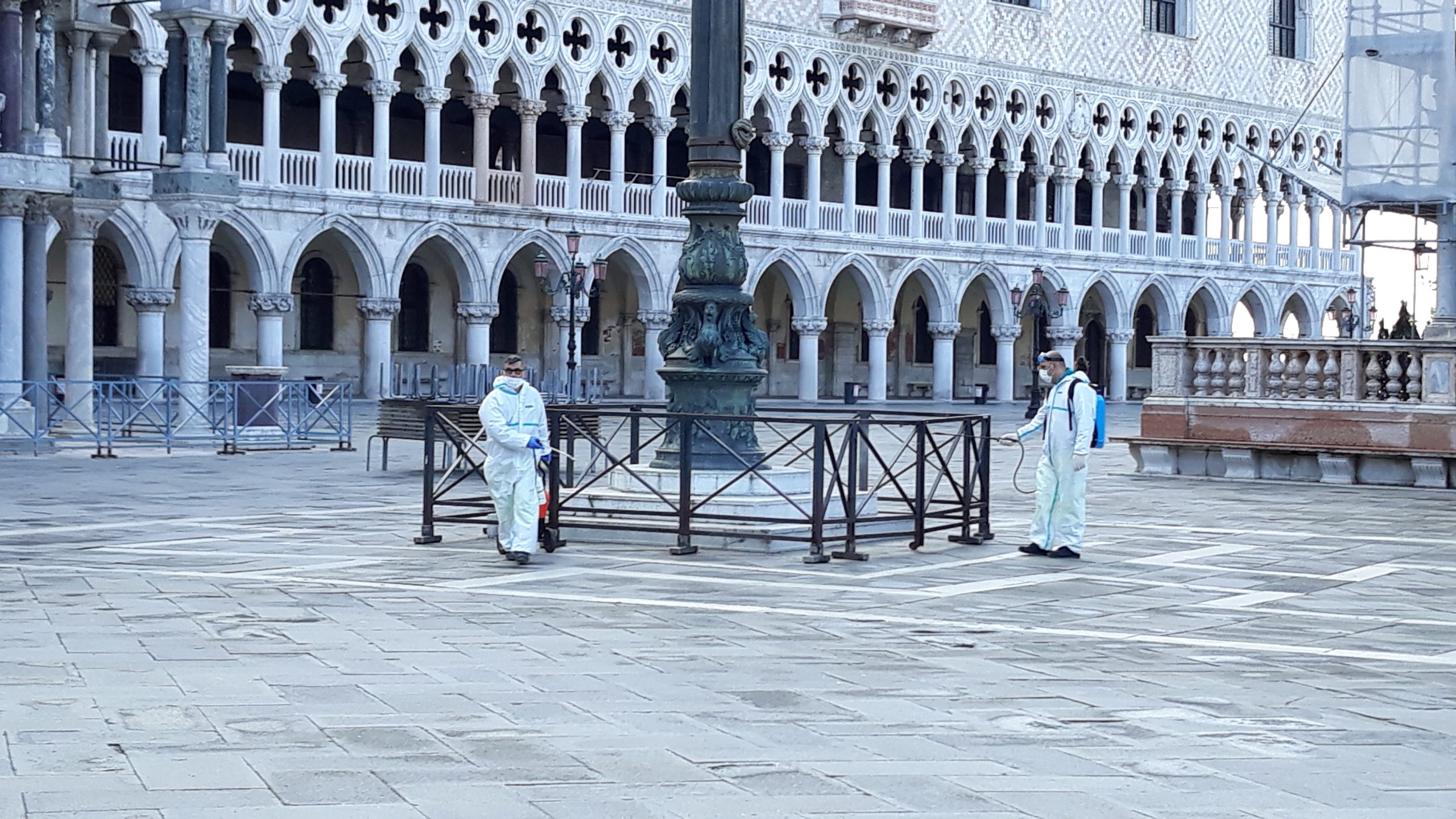
On Monday, Italy will lift its strictest corona restrictions. Meanwhile, Venice is licking its wounds. Yet hotels do see a ray of light.
The wooden gondolier’s booth on the Riva Degli Schiavoni is closed. Dozens of gondolas are moored in the water. Usually, it’s a scene of gondoliers busily coming and going who navigate the city’s canals for forty minutes or more each trip. Since the corona crisis, gondola trips have shut down. Almost all economic activity has been suspended. No one is allowed in or out of the city without a valid reason.
As a result, the nearby San Marco square is now deserted. One person is walking on the Rialto Bridge. Except for a single Vaporetto (the water bus), there is no traffic on the normally busy Canale Grande. “I’m desperate,” says the owner of the Al Ponte trattoria. “I don’t have any customers and I’m afraid customers won’t be coming back for a long time.” It states on a piece of paper on some business premises with three ATM machines that all transactions have stopped and that all the ATMs are empty. Venice is licking her wounds.
Domestic tourism
“75 % of Venetians work in tourism,” says Paola Mar, the city councilor for tourism, while we sit on a wall next to the bell tower of San Marco. In 2019, 11 million tourists spent one or more nights in Venice. The number of daytrippers is overwhelming and is estimated at 25 million every year. “Venice has been hit very hard. We hope that domestic tourism will pick up to compensate a bit for the loss this year seeing that 85 % of the tourists come from abroad.”
The quarantine in Italy will be lifted on Monday. Not in one fell swoop, but step by step. People are allowed to go out and visit each other again, but only if there is a family or other close emotional bond between them. The schools remain closed (and won’t open again this school year), the catering industry remains closed.
Ten pages long document
In the meantime, Venice is preparing for the future. “Last Thursday we drew up a protocol for all hotel owners,” says Claudio Scarpa, director of the Association of Venetian Hoteliers. The 10-page document provides rules that hotels must comply with. It is mainly about disinfection and maintaining a safe distance. The text is detailed. For example, it says that cleaning materials, such as a vacuum cleaner, must be disinfected each time with a 0.5% sodium hypochlorite solution before starting a new room. “The breakfast buffet will be a thing of the past. Guests now receive a breakfast bag,” says Scarpa. Hotels that adhere to these rules will be given a special label. That won’t be enough to keep the industry going. Scarpa fears that small hotels are bound to lose out.
But he also foresees some positive side effects. Scarpa thinks that the private room rentals, such as those offered via platforms like Airbnb, will be hit hard. He doesn’t lament that at all. Hotels are struggling with the rise of the private sector, which has hijacked part of the market. Hotels complain that they are bound by stricter rules than operators in the sub-economy.

That is an argument that may be advantageous for hotels in times of corona. “How can private individuals keep up hygiene standards? They can’t guarantee the kind of thorough cleaning that we hotels are able to do,” says Scarpa. According to him, people will be less inclined to book with private individuals for this reason.
App and electronic bracelets
Other sectors of the Venetian tourism sector are also preparing for the end of quarantine. Public transport has operated all this time, albeit there were hardly any passengers. It will be put to the test from Monday on. An app has been available since Saturday where passengers can book a seat in advance on the Vaporetto.
Museums will open from May 18th. Visits will only be possible by booking (the few available) tickets in advance. “We may decide to purchase electronic bracelets that will buzz when visitors are too close together and cross the meter and a half boundary,” says Pierpaolo Campostrini, technical manager of the Basilica of San Marco.
The gondoliers will be back to work from June 1st. “Probably only four instead of six passengers will be able to board at a time,” says Andrea Brandi, president of the gondolier’s association. The gondoliers will also be compelled to work with a face mask.
Which will be one less tourist photo opportunity.
Support us!
Innovation Origins is an independent news platform that has an unconventional revenue model. We are sponsored by companies that support our mission: to spread the story of innovation. Read more.
At Innovation Origins, you can always read our articles for free. We want to keep it that way. Have you enjoyed our articles so much that you want support our mission? Then use the button below:


